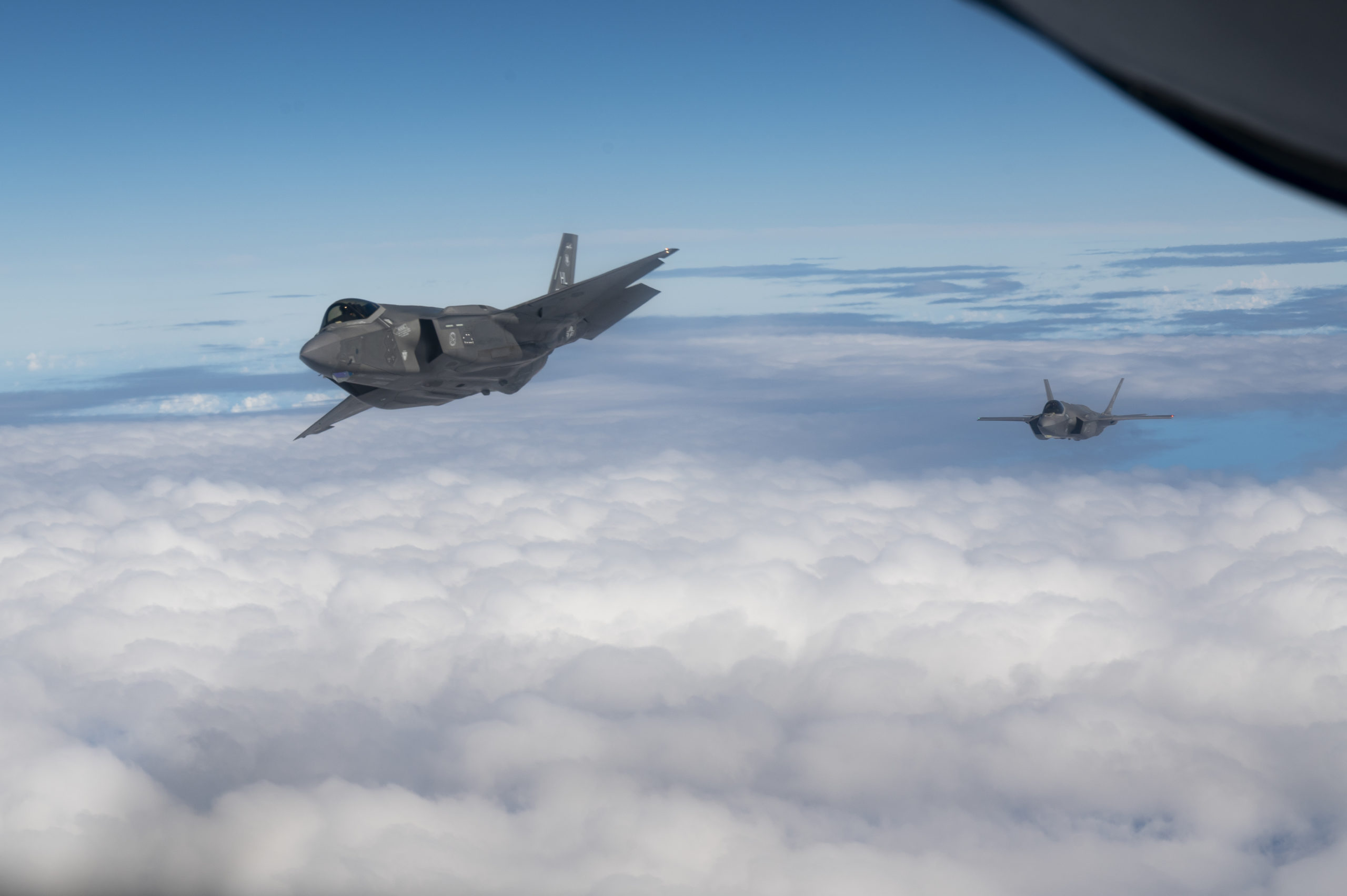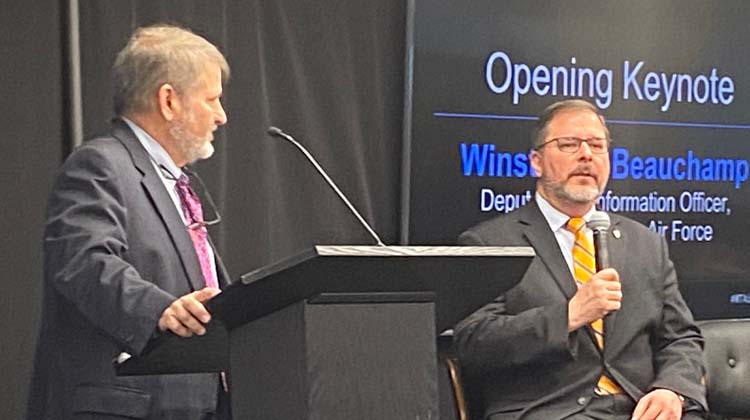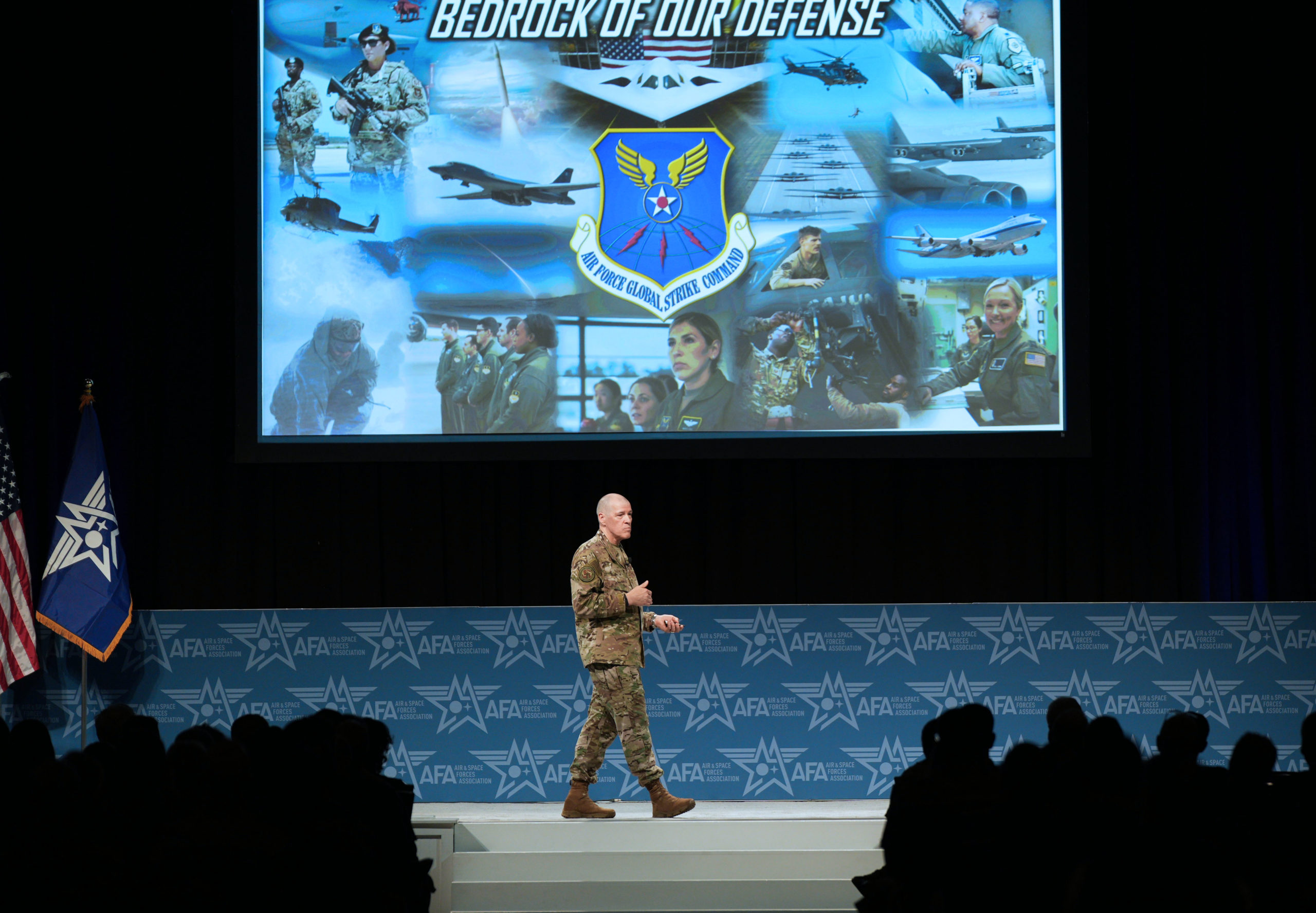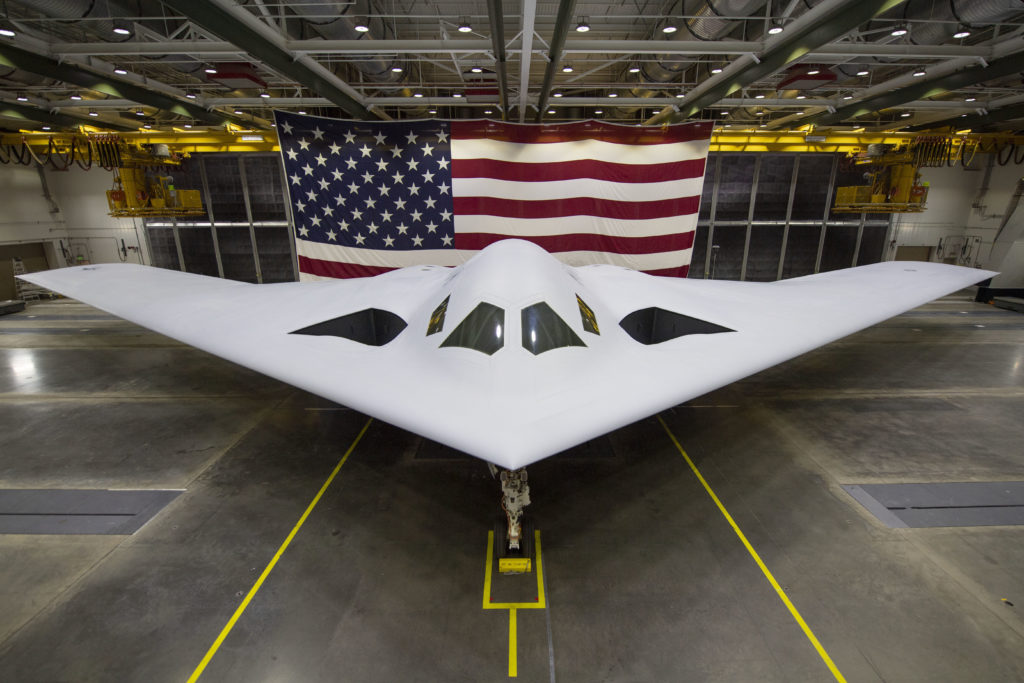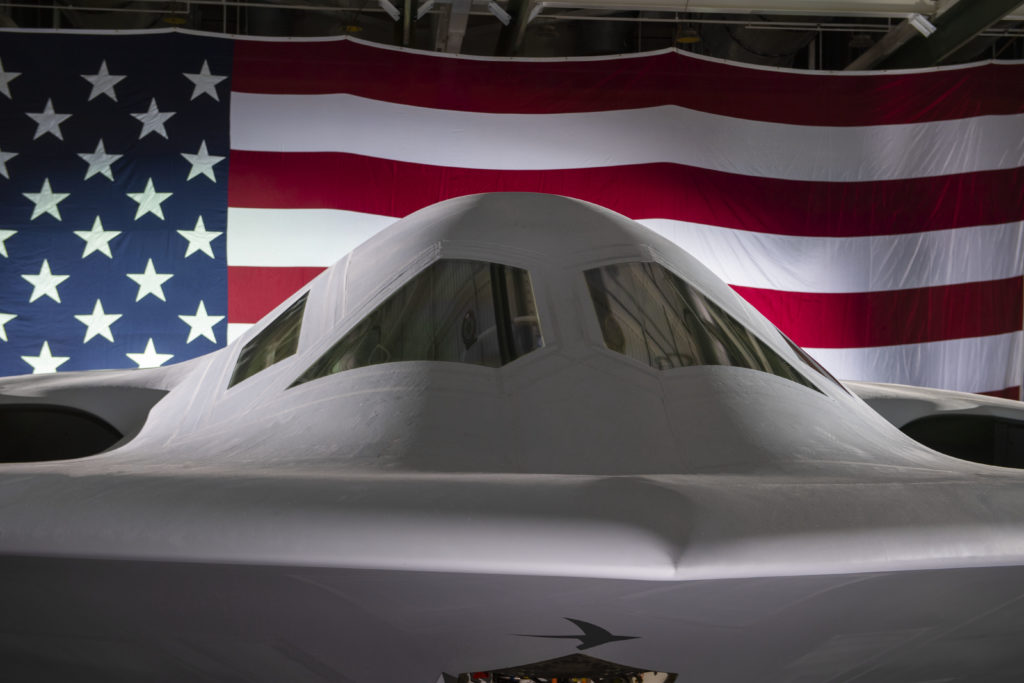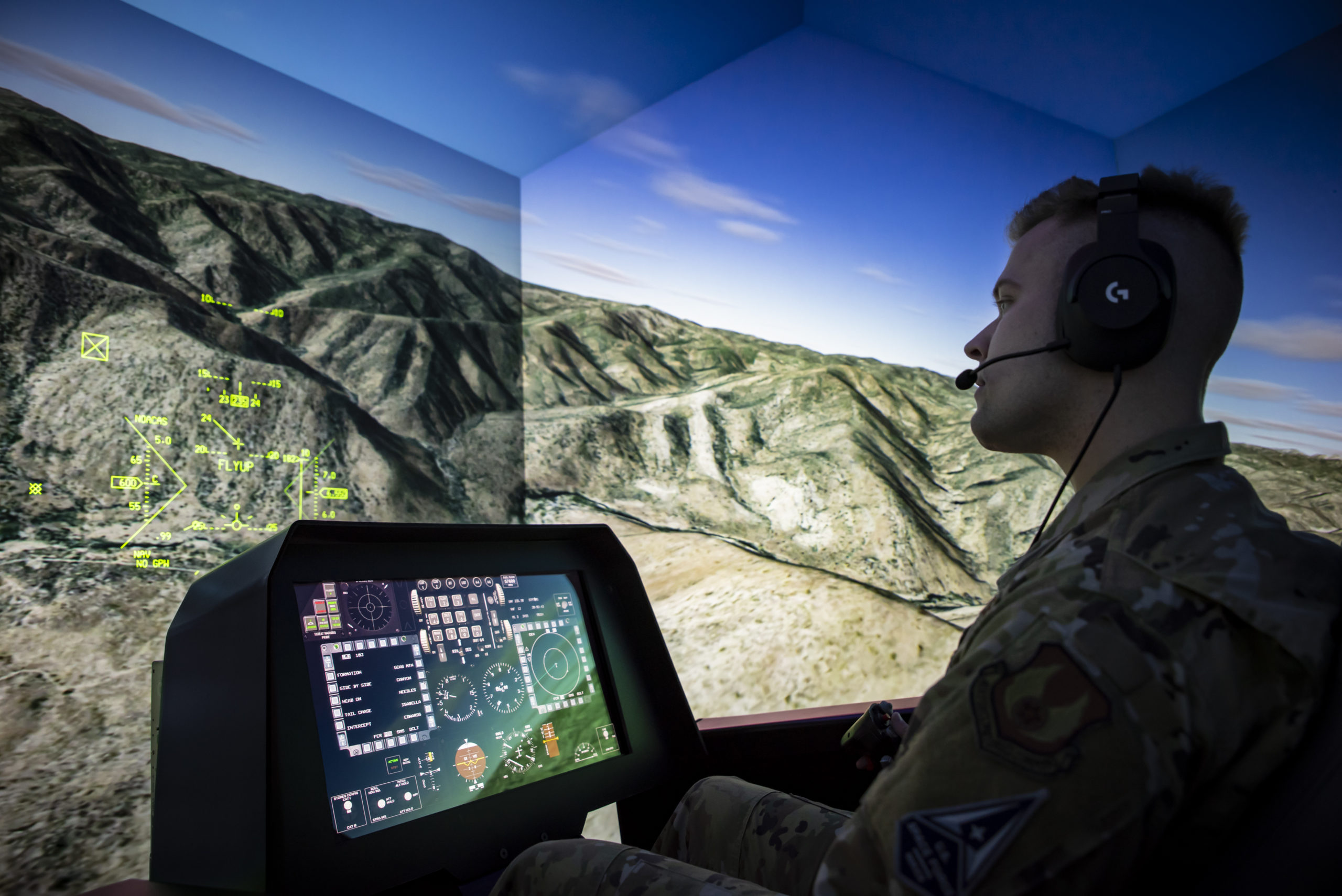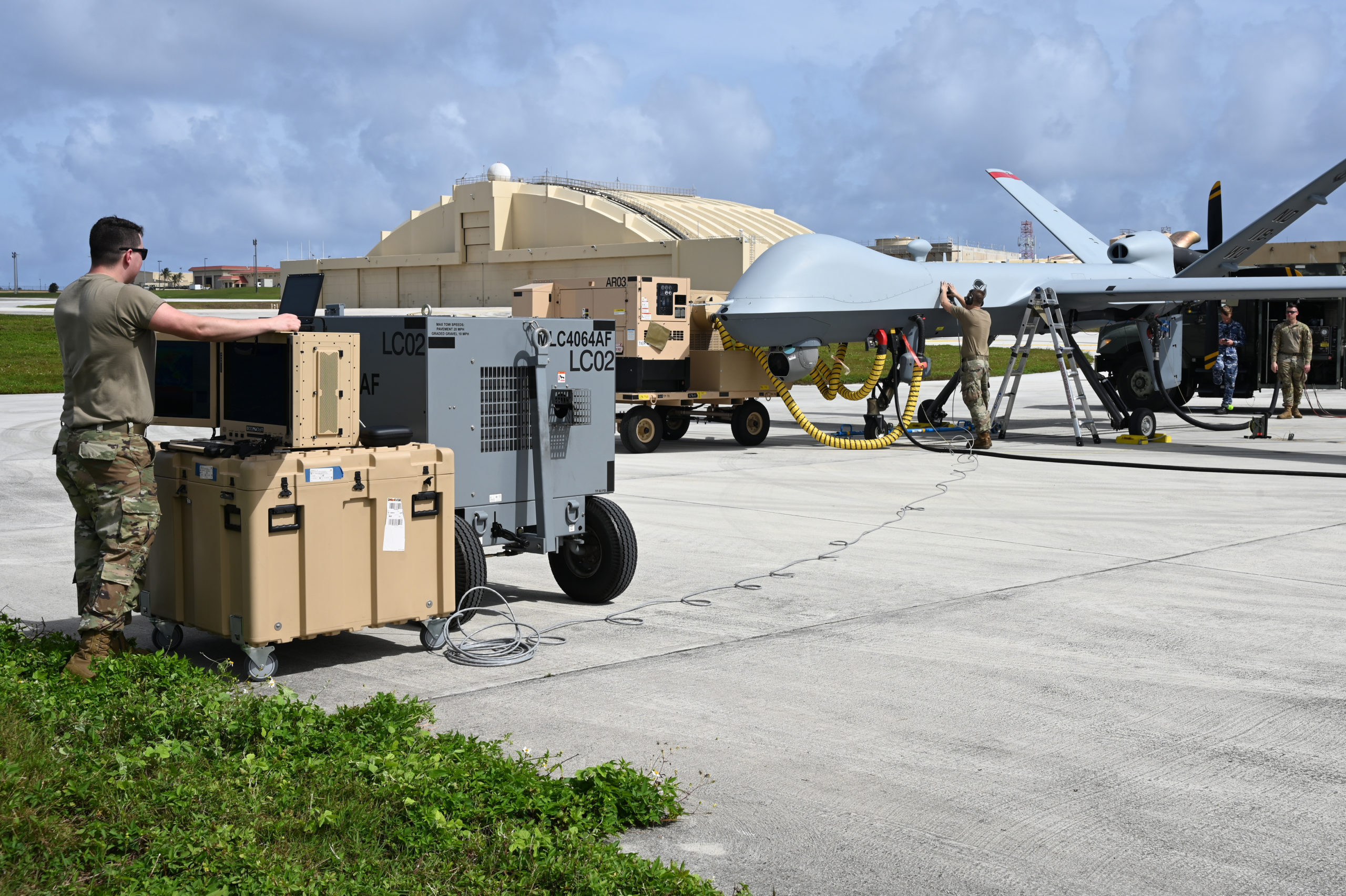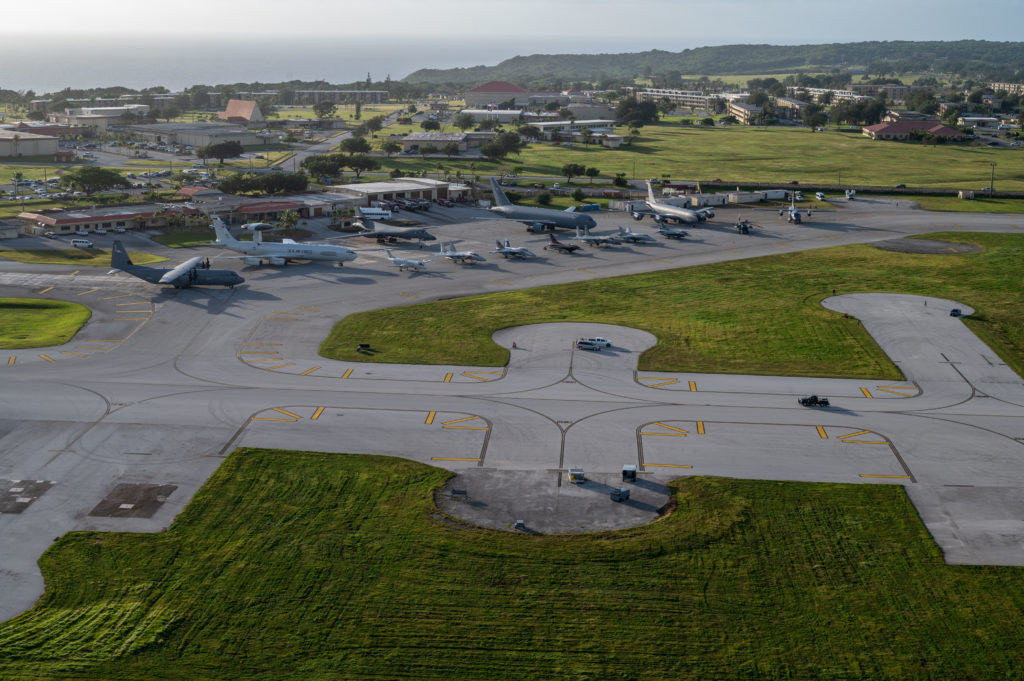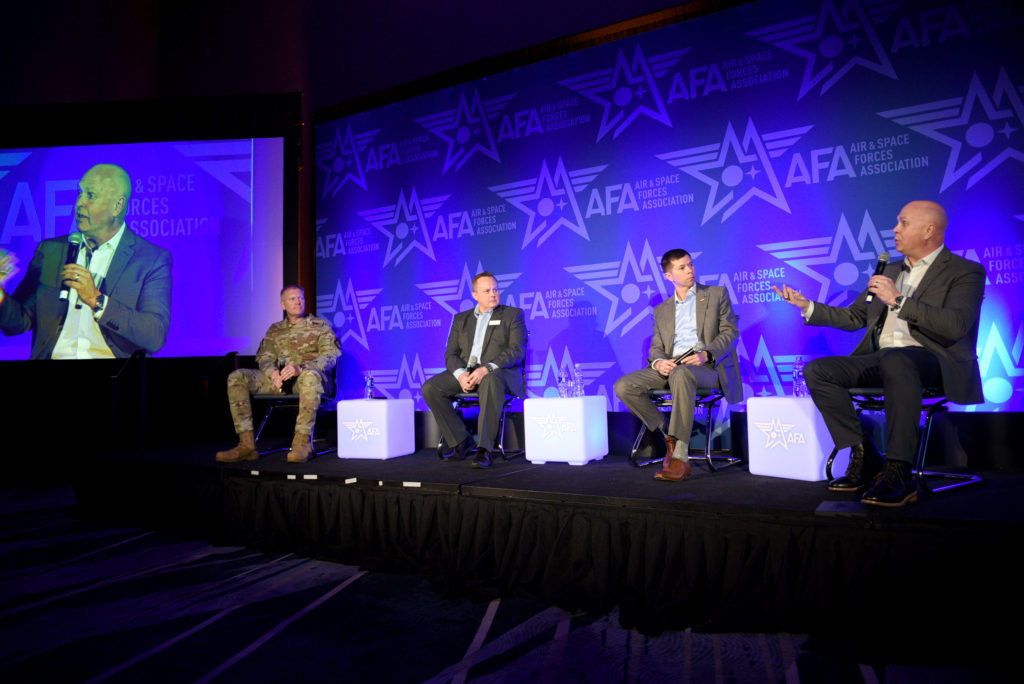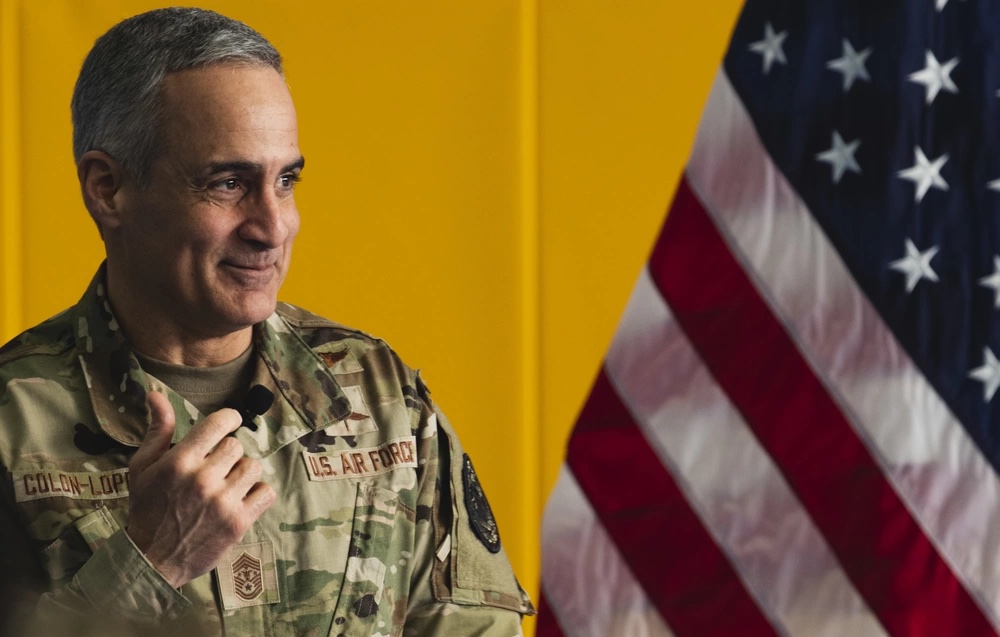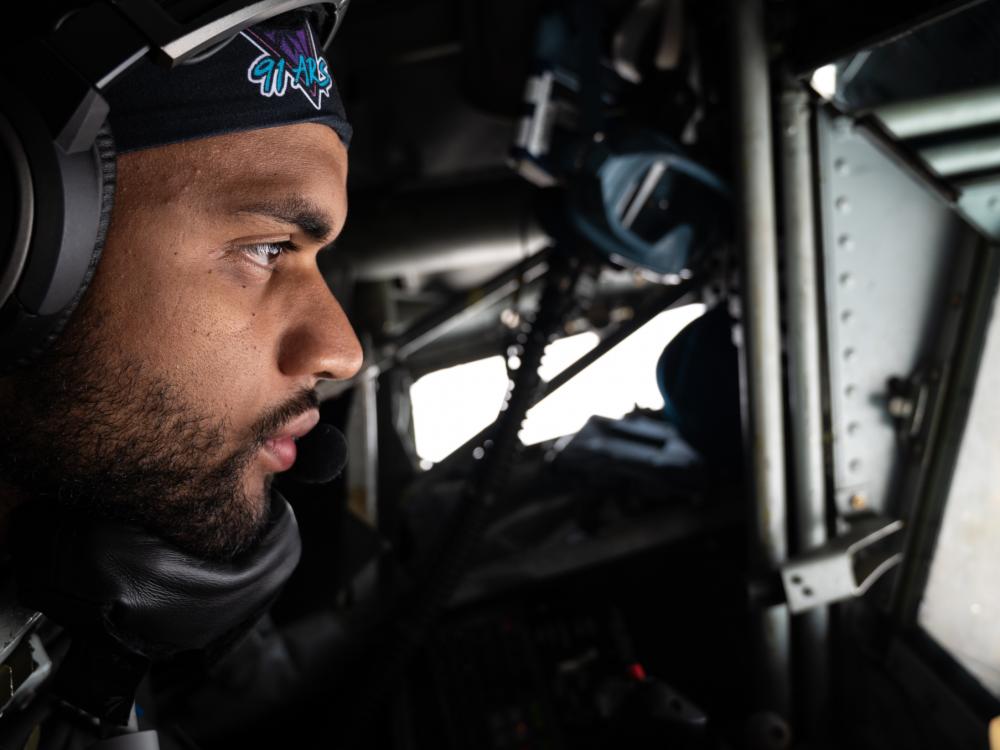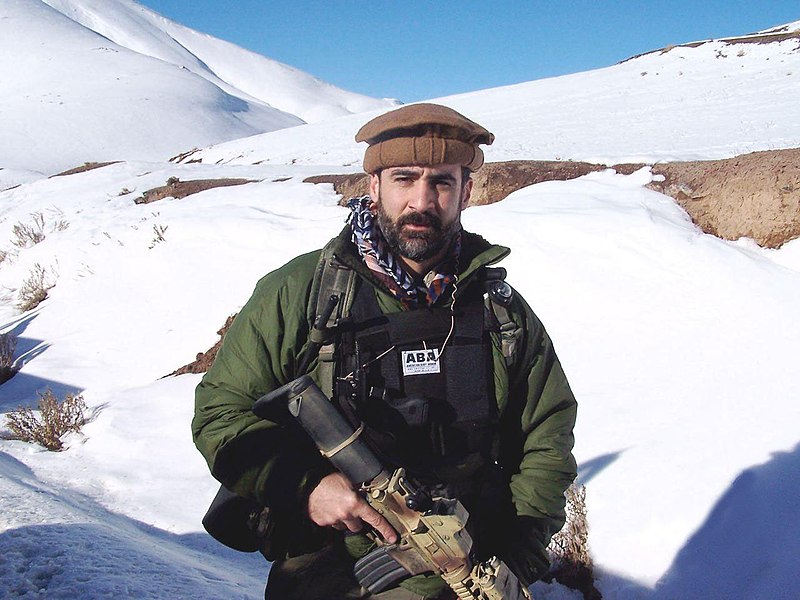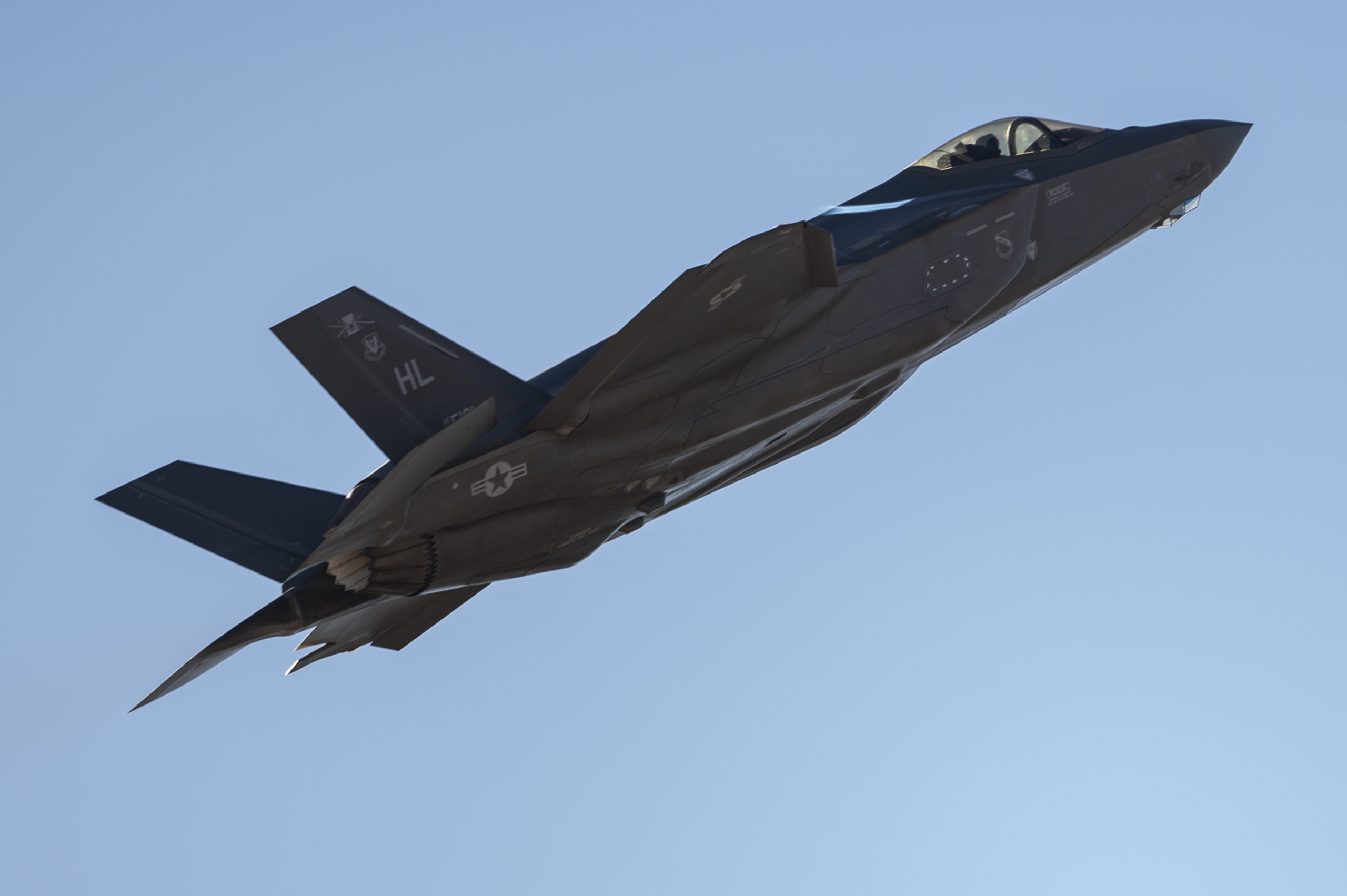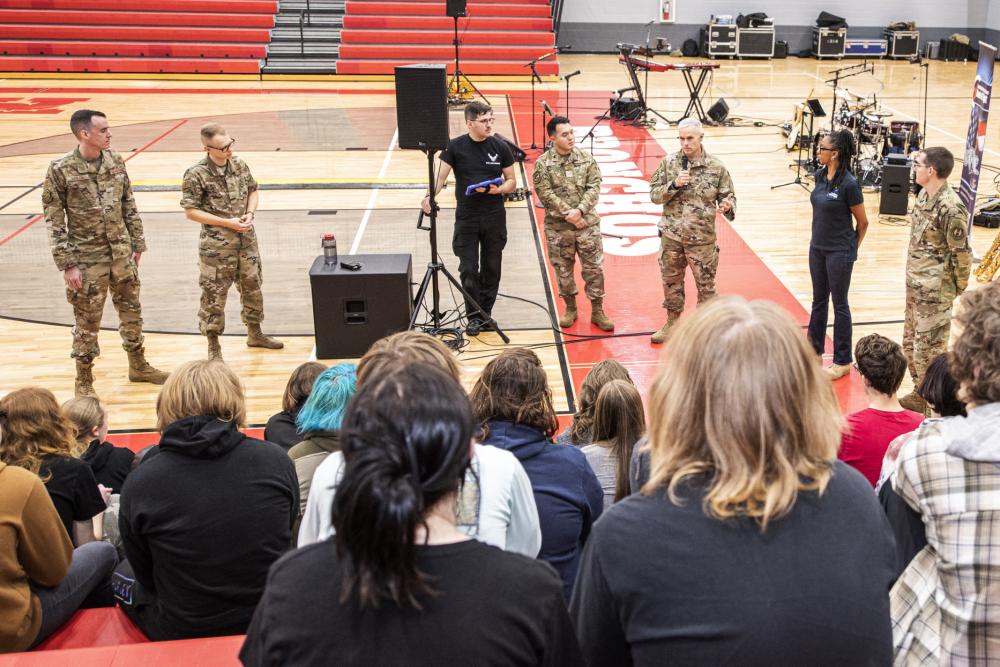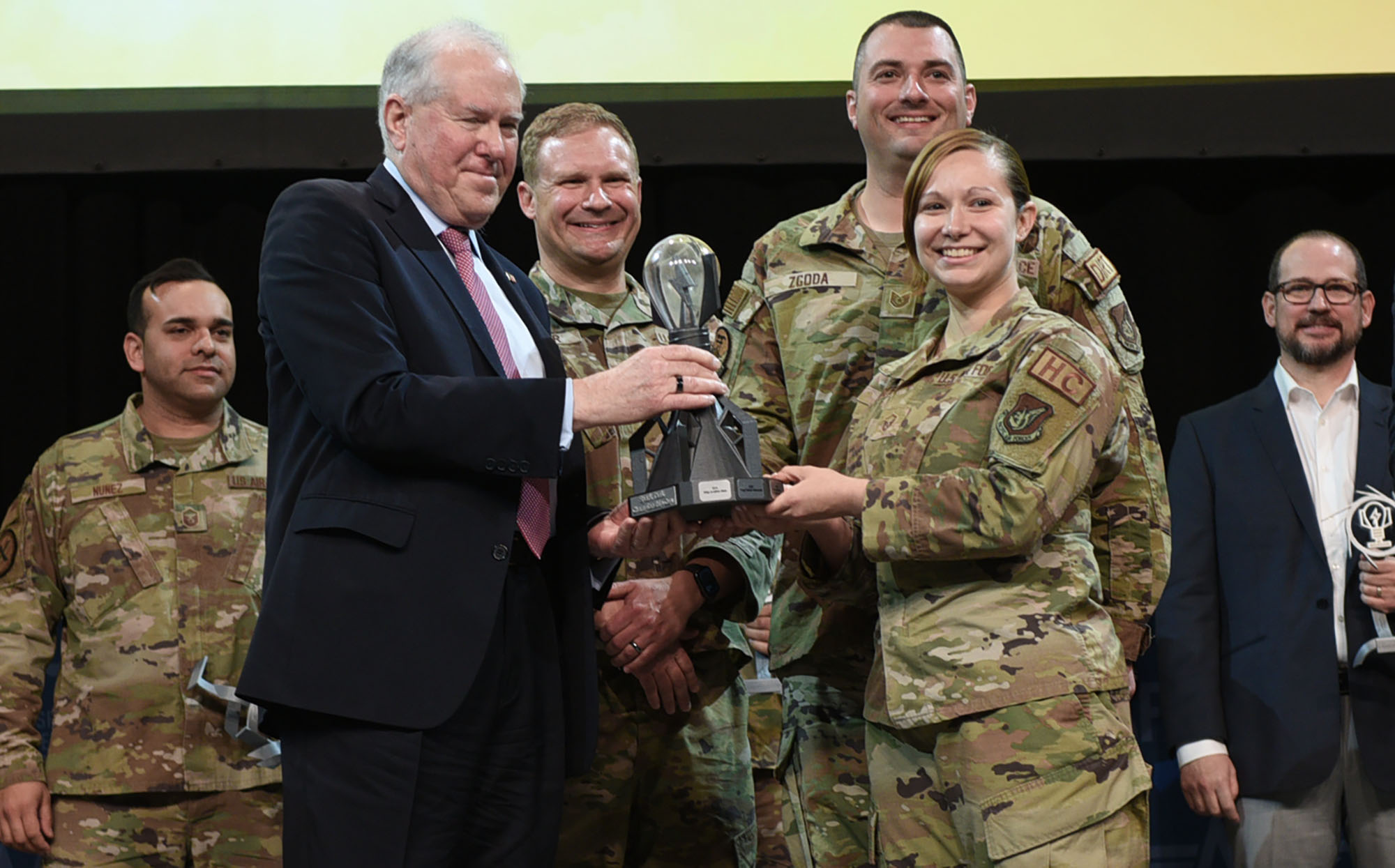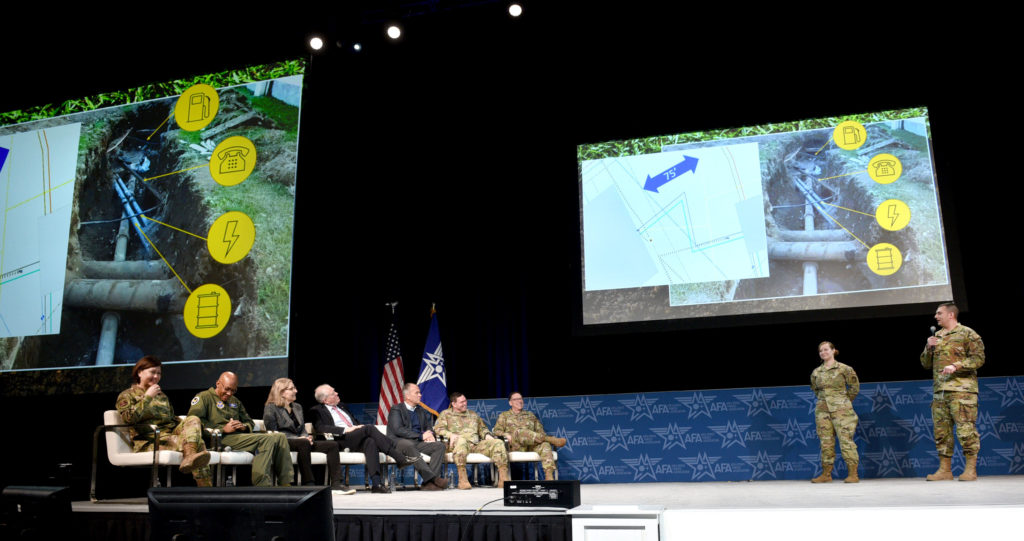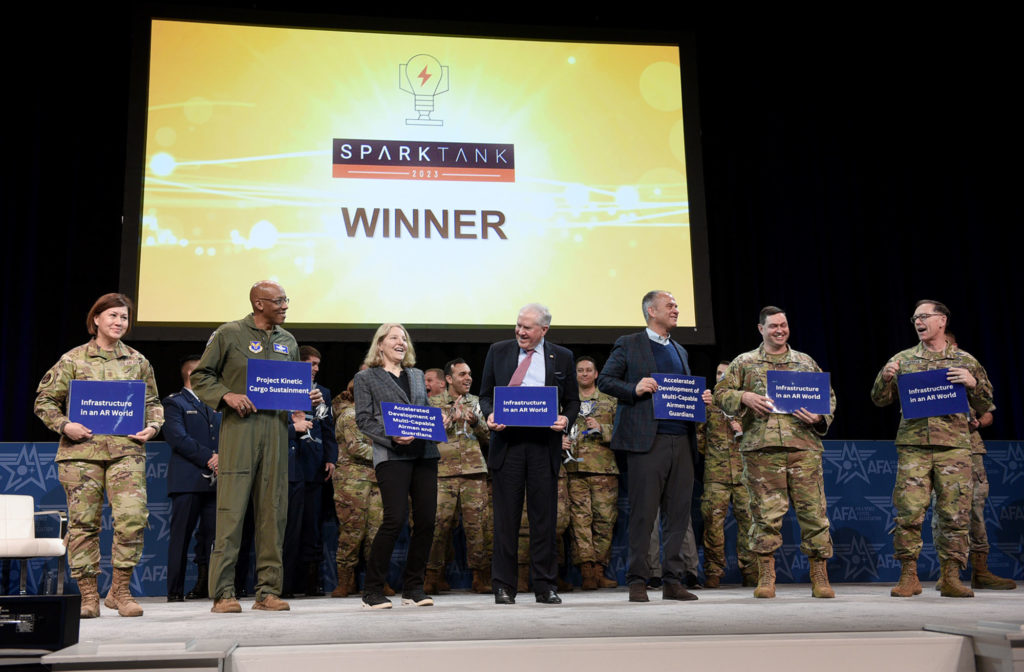The Biden administration is requesting $259.3 billion for the Department of the Air Force in its fiscal 2024 budget, an increase of more than $9 billion or about 4 percent over this year.
Not all that money would go to the Air Force and Space Force, however; $44.2 billion would pass through the department budget to other agencies. Funding for the Air Force and Space Force would be $215.1 billion, $9.3 billion over the prior year.
The proposal would:
- Retire 310 existing aircraft and invest billions to develop and acquire replacements
- Buy 72 new fighter jets—48 F-35As and 24 F-15EXs
- Start the acquisition process for the B-21 Raider
- Invest heavily in the Next Generation Air Dominance (NGAD) fighter and in a coming generation of uncrewed Collaborative Combat Aircraft (CCA)
- Increase the Space Force budget by nearly 15 percent, to $30 billion
The Department of the Air Force budget would grow slightly more than the overall defense budget. The president is seeking $842 billion for the Defense Department in fiscal 2024—a 3.2 percent increase—plus an additional $44 billion that mostly funds nuclear programs in the Department of Energy. That makes for total defense spending of $886 billion in the Presidential Budget Request.
The DOD budget includes a 5.2 percent pay raise for troops, a 4.2 percent increase in the Basic Allowance for Housing, and a 3.4 percent boost to the subsistence allowance. With inflation still running higher than budget growth, lawmakers in Congress are likely to press for further increases over the coming months.
In a briefing with reporters, Secretary of the Air Force Frank Kendall said the budget plan reflects a shift to new capabilities over sustaining USAF’s ever-aging platforms. It funds 20 “major efforts” and a dozen new programs, he said. The Space Force budget rises $3.9 billion, or nearly 15 percent, to $30 billion under the president’s plan, while the USAF budget, totaling $185.1 billion, would grow by $5.4 billion, or just 2.9 percent.
Much of the new spending is to gain future capability, some of which may not arrive until the end of this decade.
“We’re in a situation strategically where we have to make a transformation to next-generation capabilities,” said Kendall. “If we stay where we are and emphasize keeping the current force strong … we’re going to be falling behind. And we’re going to be falling behind pretty rapidly.”
NGAD is already maturing in development, Kendall said, but the program remains shrouded in secrecy. The development of CCAs is also rapidly maturing, spurred by a combination of Air Force and industry investment.
The budget also pays for 15 new KC-46 tankers to continue replacing aging KC-135 and KC-10s, and invests in a new stealthy tanker, dubbed the Next Generation Aerial Refueling System (NGAS).
The Air Force is renewing its proposal to retire 32 early model F-22 Raptors, along with 57 F-15C/D Eagles, two E-3 Sentry AWACS, 48 MQ-9 Reapers, 42 A-10 close air support aircraft, and 24 KC-10 tankers, according to Maj. Gen. Michael A. Greiner, deputy assistant secretary of the Air Force for budget.
Congress balked at retiring the F-22s last year, but the Air Force maintains that those aircraft are not viable for combat operations and that the cost and time needed to upgrade those aircraft makes the idea untenable.
In a major decision regarding the F-35 fleet, the Air Force plan does not fund the Adaptive Engine Transition Program (AETP), which would have provided a new more powerful and potentially more reliable engine for the Air Force F-35A; the performance improvements were attractive, Kendall said, but the Air Force would have had to fund the change on its own and the service opted instead for a less costly and complex core upgrade to the existing Pratt & Whitney engines.
“I think we’ve got a good balance and we were able to get the resources through processes internally to allow us to move forward,” Kendall said.
‘The President’s proposed budget for the Department of the Air Force rightly prioritizes modernization of our Air & Space Forces,” said AFA President & CEO Lt. Gen. Bruce Wright (USAF, Ret.) “We are pleased to see a substantial pay raise, a 15 percent increase in Space Force spending to improve intelligence, communications, and resilience in that critical domain, and also robust investment for 72 new fighter aircraft, the B-21 bomber, the E-7 Wedgetail AWACS replacement, a new generation of Collaborative Combat Aircraft, and Sentinel ICBM modernization program.
“Yet at a time of grave threats and significant inflation, the rate of growth in the Air Force investment accounts is still not what it should be. Investments in airpower today will deter war tomorrow. Congress must work across party lines to ensure unfunded priorities are addressed and that budget legislation is completed in a timely manner this fall.”
Next Stop: Capitol Hill
Congress ultimately decides what resources the Air Force and Space Force get, and the debates will intensify there as the summer heats up. Republicans criticized the Biden administration’s overall defense budget request when the topline figures were released March 9, calling the investment too small, especially given persistently high inflation. Top Democrats, such as Sen. Jack Reed (D-R.I.), the chairman of the Senate Armed Services Committee, were also hesitant to endorse the plan. Reed called DOD’s request a “useful starting point.”
Department of the Air Force leaders accept that there will be differences of opinion, but have been outspoken in public comments that whatever Congress wants to do with the budget, it should get it completed on time. Failure to produce a budget by the end of the calendar year, let alone the fiscal year, which ends Sept. 30, is just “giving away time for free,” Kendall said.
DAF leaders say their budget reflects the required shift toward the future.
“Defending the nation requires constant vigilance in all domains,” said Kristyn E. Jones, the assistant secretary of the Air Force for financial management and comptroller. She cited investment in new fighters and “the acceleration of our acquisition of space-based missile warning architectures to improve our sensing and naval defenses against the full range of ballistic missile threats” as examples of that multidomain vigilance.
“National Defense also requires recapitalizing the ICBM missile and bomber legs of the nuclear triad,” Jones said. “The Sentinel program, or ICBM replacement, is continuing in development and the recently unveiled B-21 Raider is scheduled to achieve its first flight this calendar year. ”
The 2024 budget includes $3.7 billion for the Sentinel, formerly called the Ground Based Strategic Deterrent, which is set to replace 400 decades-old Minuteman III ICBMs one-for-one. It also includes $3 billion for B-21. Both figures are broadly in line with what Air Force plans allocated to those programs in fiscal 2023. Spending will increase for missile warning and defense and for the Advanced Battle Management System.
Munitions development is funded, with increases in production of the AIM-120 AMRAAM and AGM-158 JASSM-ER, as well as its anti-ship LRASM variant.
Concerns over munitions shortages have come to the fore after Russia’s invasion of Ukraine. Wargames over a potential conflict with China show that without an increase in inventories, the Air Force could exhaust its supply of LRASMs within a week. The service plans to purchase 550 JASSMs and 27 LRASMs. The Air Force also wants to allocate $1 billion to work towards multi-year procurement contacts to allow the defense industry to increase the production capacity of JASSM-ERs, LRASMs, and AMRAAMs.
“JASSM-ER we’re going to be at 550 quantity—that’s max production,” Greiner said. “This year, there’s also some facilitation dollars included in JASSM-ER and the goal is … to ramp us up to 810 production in the future.”
The Air Force and Space Force, however, still face the risk of no budget at all, or at least a delayed one, hampering work on their priorities. Republicans gained control of the House in the 2022 midterm elections, while Democrats still hold the Senate. DOD is just one part of the $6.8 trillion budget unveiled by the White House on March 9, and the administration’s request will add fuel to the debate over the looming debt ceiling.
Kendall noted even before the White House released its request that failure to complete a budget on time has serious implications for the services. This year, with a dozen new programs, the stakes are even higher for the Department of the Air Force.
Kendall noted that Congress started the 13 of the past 14 fiscal years under continuing resolutions, which freeze funding at current levels while Congress hashes out a new budget. Likewise, the annual National Defense Authorization Act legislation has also been completed after the end of the fiscal year multiple times in recent years.
“We move at the pace of money and engineering,” Kendall said. “You don’t start until you get the money. If we have a year-long CR, or even just a very long CR … that’s giving away time for free. So I’m very concerned about that as we go into this. I’m very comfortable with what we’re asking for. I think we’ve got a good mix here. But I am worried about getting through a timely process and getting the authorities and the appropriations we’re going to need to move forward.”
